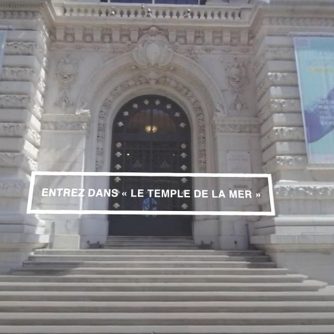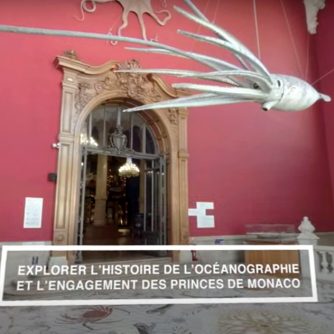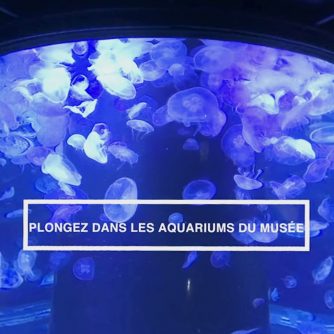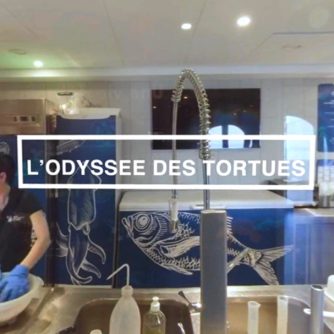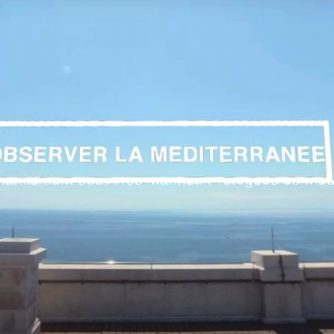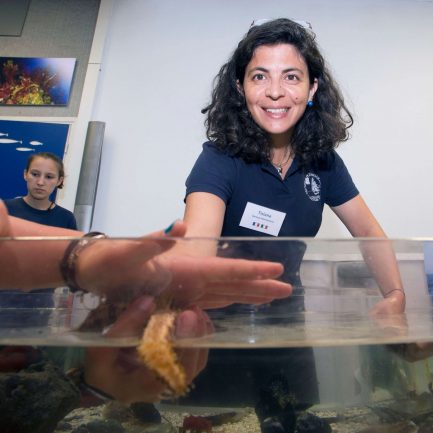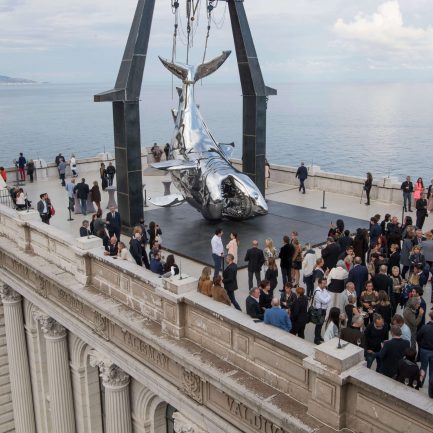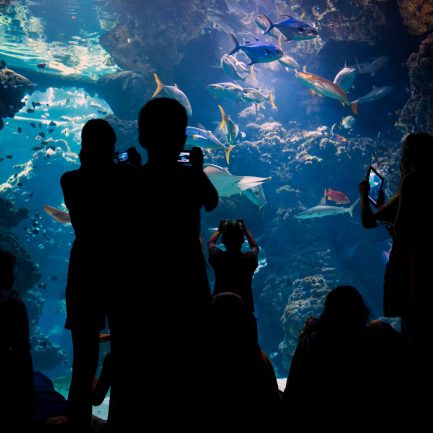ENTER THE
"TEMPLE OF THE SEA"
- Home
- Actualités
- Chapter 1 – The Temple of the Sea
raise awareness of the need to
protect the oceans
The steps of your virtual visit
Points of interest :
- The Oceanographic Museum of Monaco
- Oil on canvas by Louis Tinayre
- Mosaic of the yacht Princess-Alice II
- The Medusa Chandelier
- Statue of Prince Albert I
- The fluorescent coral pool
- Canvas paintings of the ceiling of the conference room
- Coat of arms of the Grimaldis
The Oceanographic Museum of Monaco

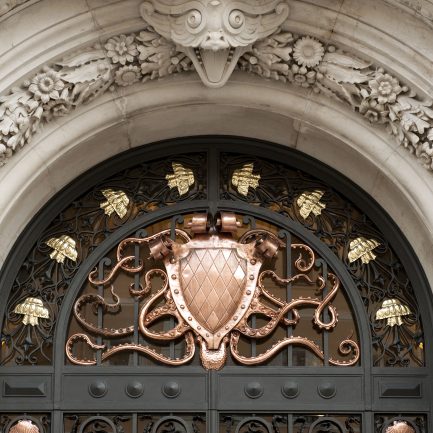
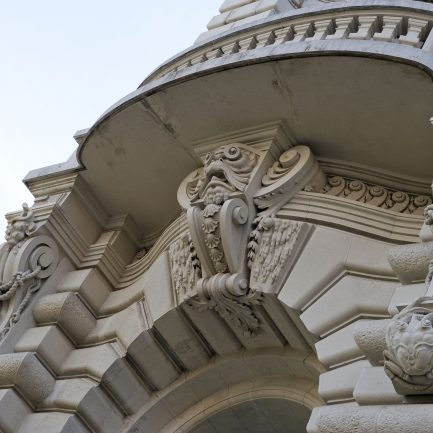
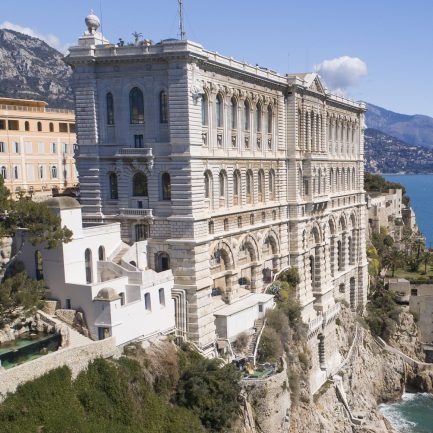
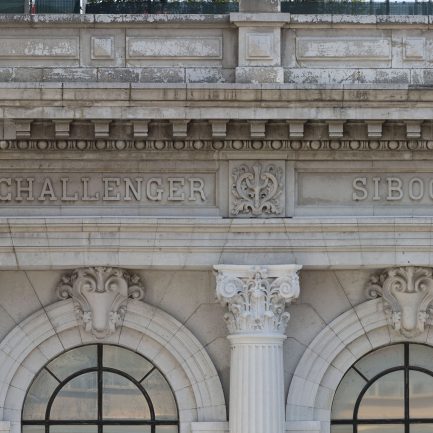
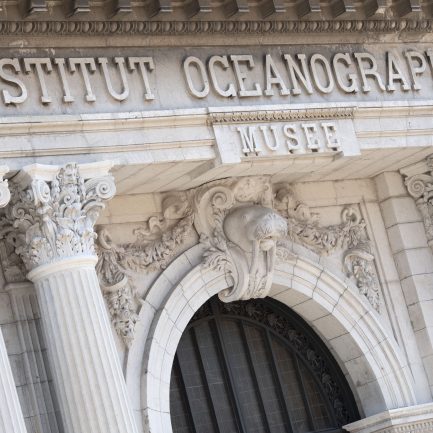
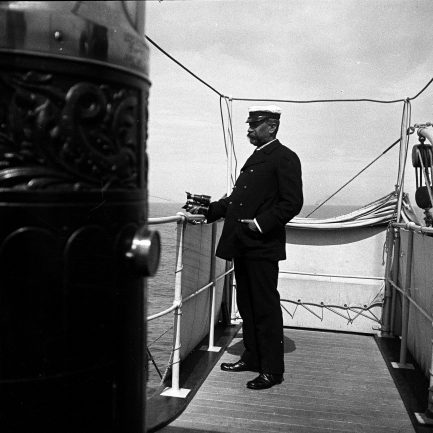
Created by its founder Prince Albert I (1848-1922) as a palace entirely dedicated to the sea, its mission is to make the oceans known, loved and protected. Inaugurated in 1910, it overlooks the Mediterranean, on a cliffside. Nearly 650,000 visitors come through its doors every year. The 100-metre long façade is built, like the rest of the museum, from La Turbie limestone. The ornamentation evokes the marine world: foam bosses, fish, waves, seaweed, shellfish, octopus, ship’s bow, ropes, etc.
On the upper cornice are engraved 20 names of scientific ships chosen by Prince Albert I himself, from a list drawn up by Dr Jules Richard (1863-1945), the first director of the Museum and a faithful collaborator of the Prince. The two allegories on the central part of the Oceanographic Museum’s facade are the work of the sculptor
the work of the sculptor Louis Gustave Dussart (1875-1952). On the left, Progress coming to the aid of Humanity and on the right, Truth revealing the forces of the world to Science. They are made of Brescian limestone and are 8 metres high. The walrus head, the keystone of the large central window, is also the work of Dussart.
Oil on canvas by Louis Tinayre
"Isachsen mission on a glacier crosses an ice bridge"
This very large canvas by Louis Tinayre (1861-1942) (4 x 3 m) was made in 1906. It depicts the Isachsen mission crossing the 14 July glacier. During the scientific campaigns of 1906 and 1907, Prince Albert I financed several land expeditions, two of which were led by Captain Gunnar Isachsen (1868-1939). Together with his team, he carried out cartographic and topographic surveys of an unexplored area of north-western Spitsbergen, which now bears the name of Albert I Land. In 1907, Prince Albert I described the expedition as follows: “Captain Isachsen of the Norwegian Army, assisted by Lieutenant Staxrud, the geologist Horneman, the French doctor Louët and four Norwegian porters, equipped with sledges, skis and measuring instruments, have collected, over a distance of about 1000 km, the elements of a complete map and geological study of a whole region which no one had yet penetrated.
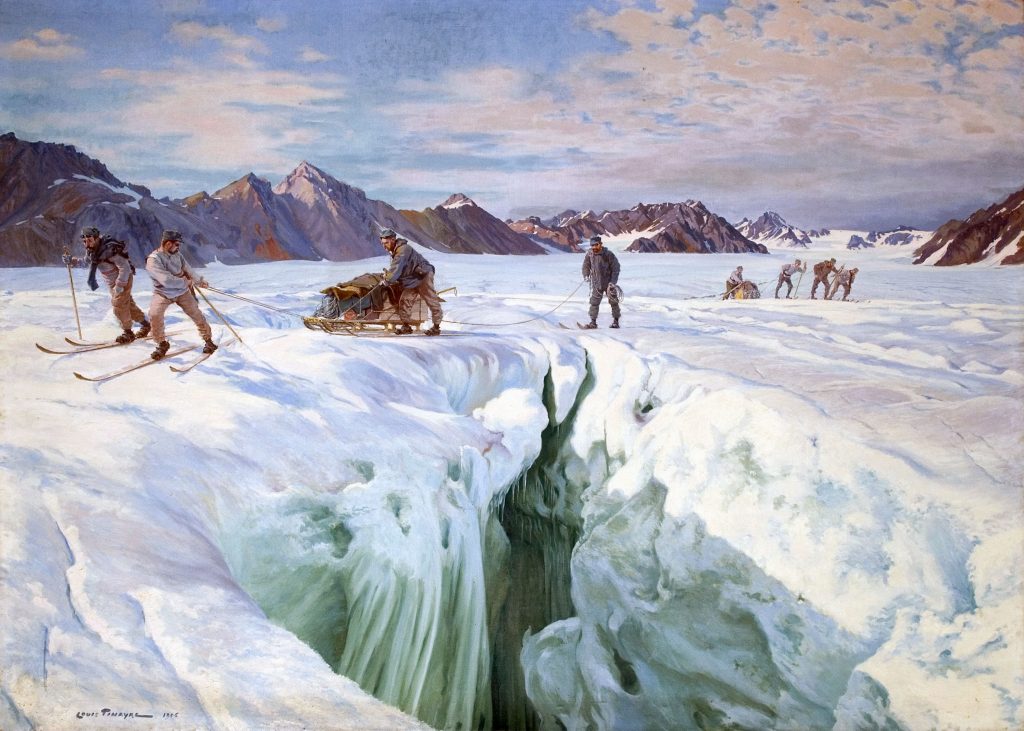
Mosaic of the yacht Princess-Alice II
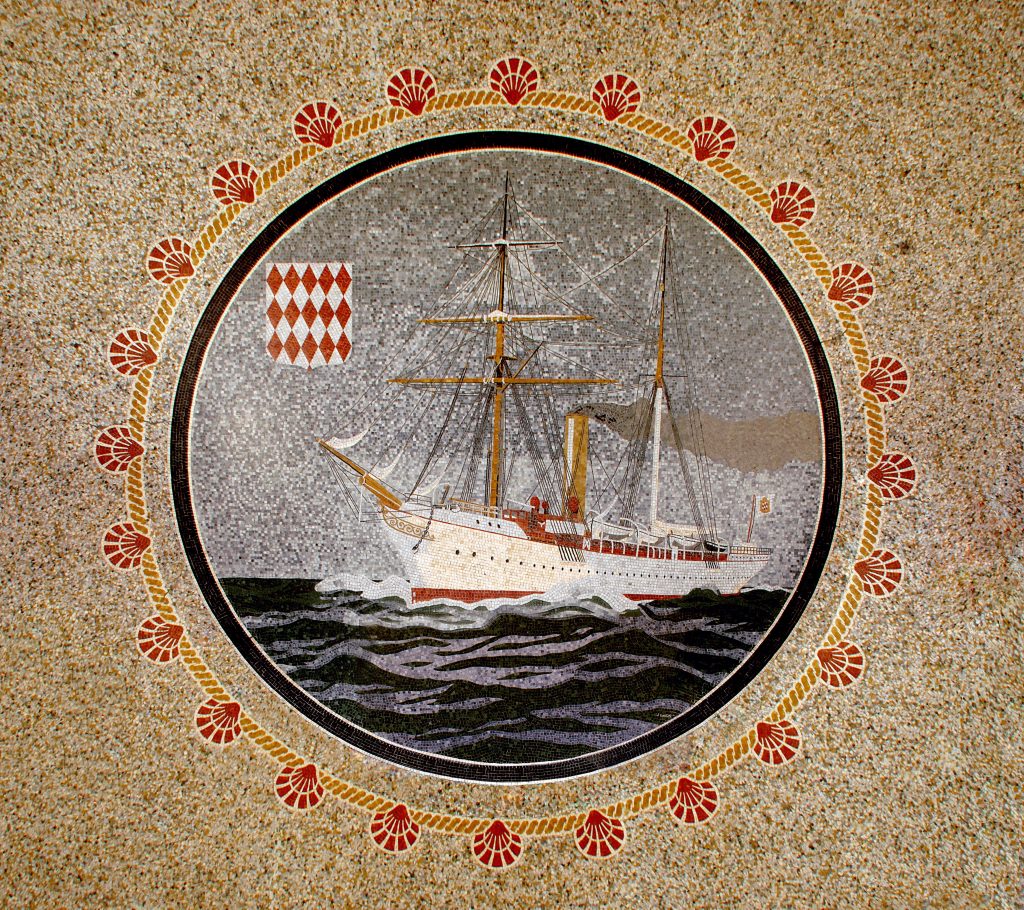
In the entrance hall, a monumental coloured mosaic presents in its centre the third ship of Prince Albert I, the second Princesse-Alice, whose oceanographic campaigns were the most important of His career. The Prince wanted every marine motif represented to be in strict accordance with scientific data. Thus, flying fish and octopus can be seen around the ship. The work was created by an Italian mosaic artist, Joseph (Giuseppe) Tamagno.
The Medusa Chandelier
The Medusa Chandelier, made by the Maison Baguès in 1908, adorns the ceiling of the Salon d’Honneur. It represents a species discovered in the Strait of Malacca (South-East Asia) by the German biologist Ernst Haeckel (1834-1919) and named Rhopilema frida, in homage to his lost love, Frida von Uslar-Gleichen. Enthused by his discovery, the biologist made a sketch of it, inspired by the naturalist and explorer François Péron (1775-1810), who described a jellyfish “in the shape of a crown or rather of a chandelier such as one sees in the palaces of princes”. This sketch was later used as a model for the sculptor Constant Roux (1865-1942) to design this magnificent piece, which seems to have come straight out of a prince’s palace.
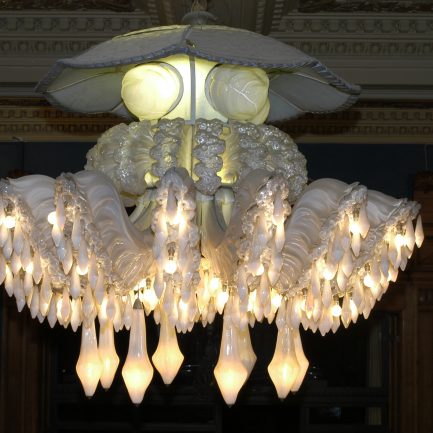
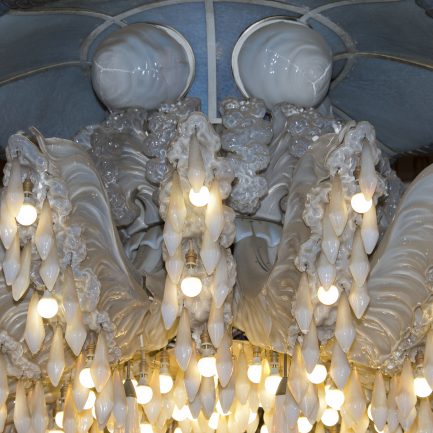
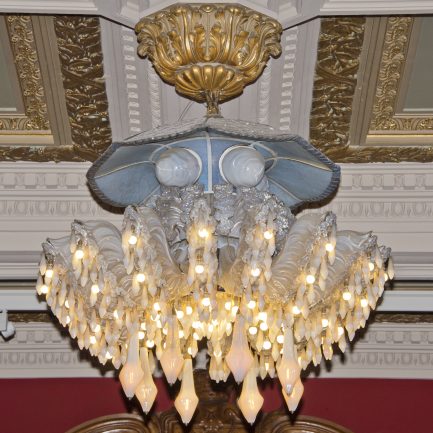
The Statue of Prince Albert I
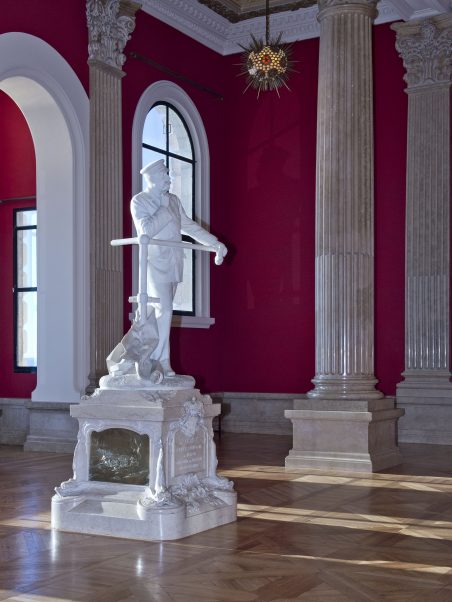
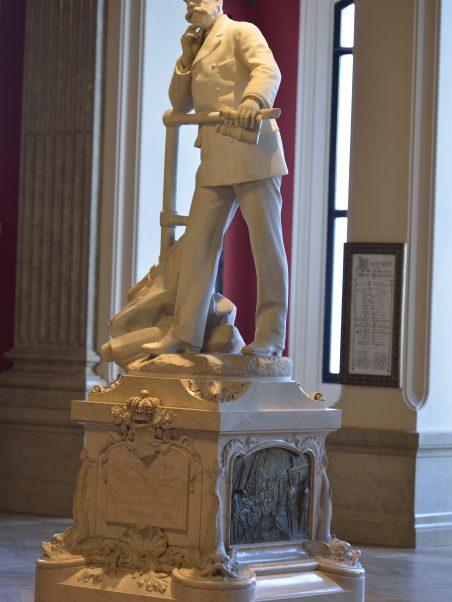
This marble statue of Prince Albert I of Monaco, the work of the artist Denys Puech (1854-1942), was created thanks to a subscription launched by Prince Louis (1870-1949), son of Prince Albert I, among the Prince’s relatives, collaborators and the Monegasque people. The decoration of the pedestal, which borrows from the marine world, is decorated with two bronze bas-reliefs, cast by the famous founder Claude (Claudio) Valsuani (died 1923) in 1910. These bas-reliefs, entitled “Hunting Cetaceans” and “Harvesting a Trawl on Deck”, were placed on the pedestal for the official inauguration of the Oceanographic Museum on 29 March 1910.
The Fluorescent Coral Pool
Some corals have the ability to “fluoresce”. This natural phenomenon is linked to a protein. The colony emits part of the absorbed light in the form of fluorescent light. The role of this fluorescence is not well known. It can serve as: protection / to facilitate photosynthesis of algae / or to communicate.
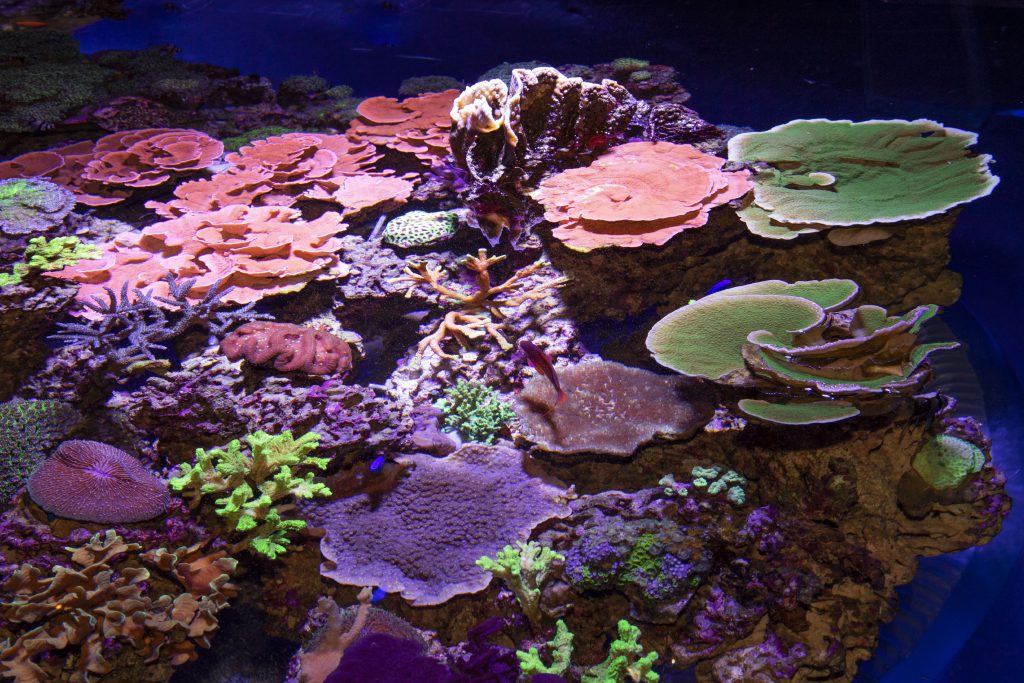
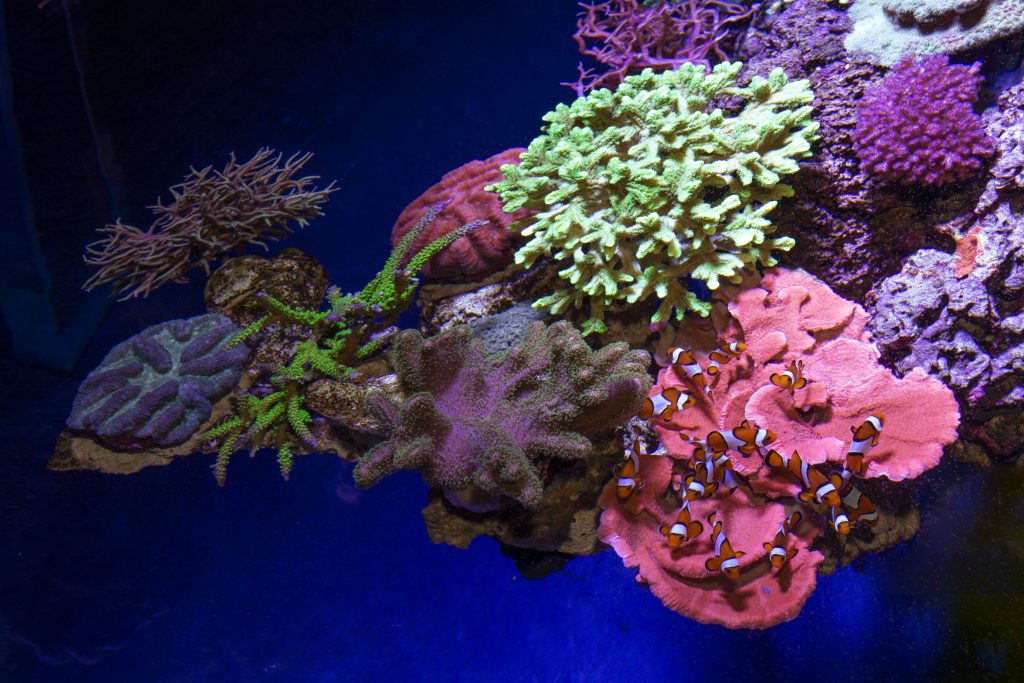
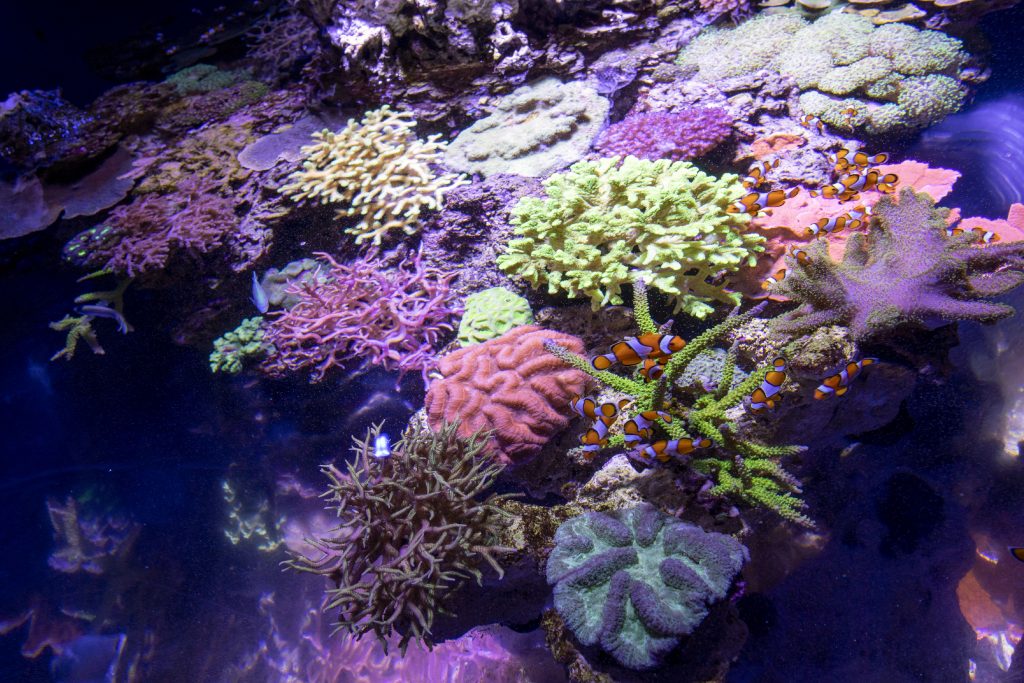
Canvas paintings of the ceiling of the Conference Room
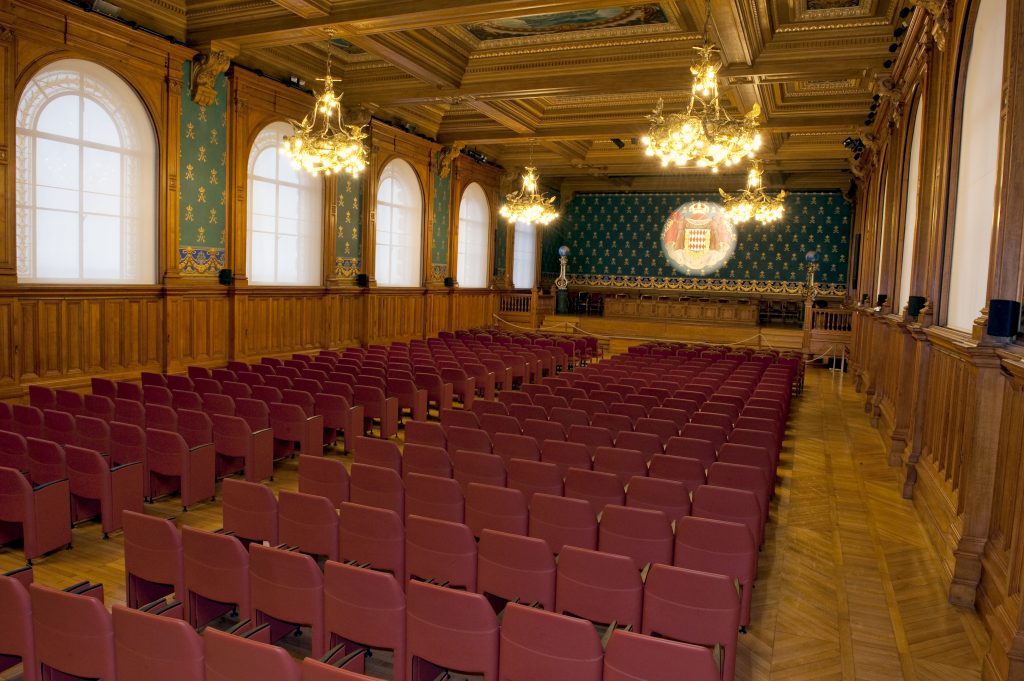
The ceiling is divided into coffers. The central part is reserved for marine subjects, painted by Marie-Félix Hippolyte-Lucas (1854-1925): “The first sailors”, followed by “the lighthouse”, “the raising of the trawl”, “sea birds”, “whaling” and “seal hunting”. The coffers around the perimeter, executed by Emmanuel Cavaillé-Coll (1860-1922), who was responsible for the decoration of this room, are decorated with marine animals, inspired, like the chandelier in the Salon d’honneur, by the drawings of Ernst Haeckel (1834-1919).
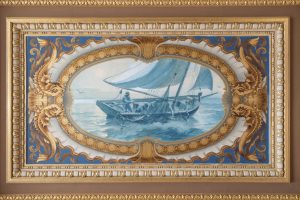
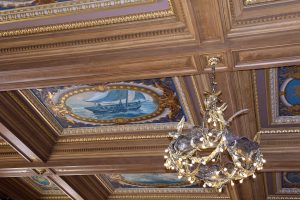
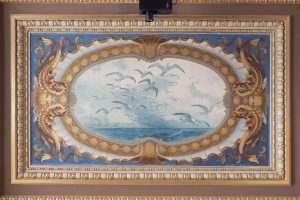
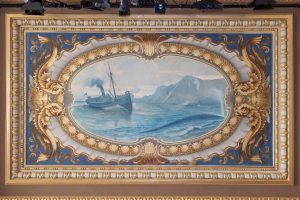
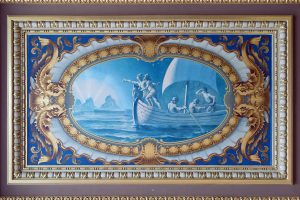
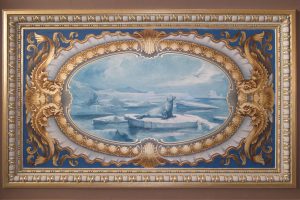
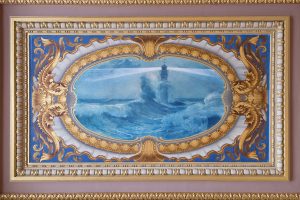
Coat of arms of the Grimaldis
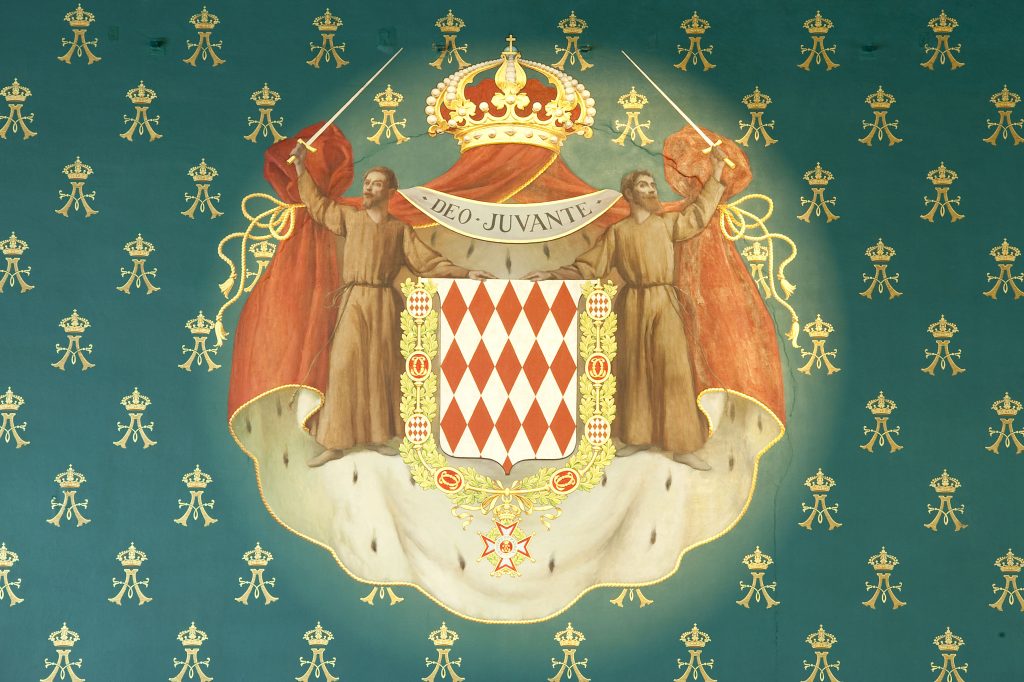
This coat of arms is a great enigma for us… It was discovered very recently, in 2010, during the restoration work undertaken for the centenary of the Oceanographic Museum. Why was such a work, very well executed, surrounded by numerous gold monograms of Prince Albert I and in perfect harmony with the rest of the room, hidden? Since 1910, a huge 8-metre long painting, Princess Alice II at sea by Edouard Monchablon (1879-1914) (Grand Prix de Rome in 1903), has covered this precious coat of arms. Today we have given it back its rightful place.







